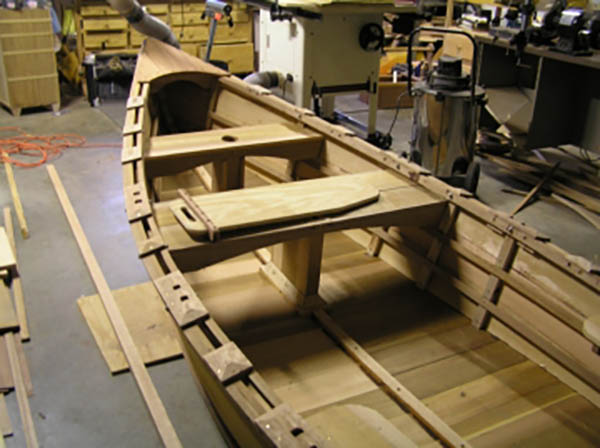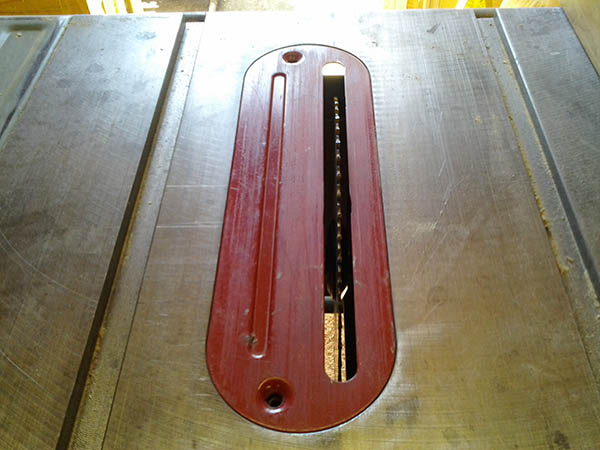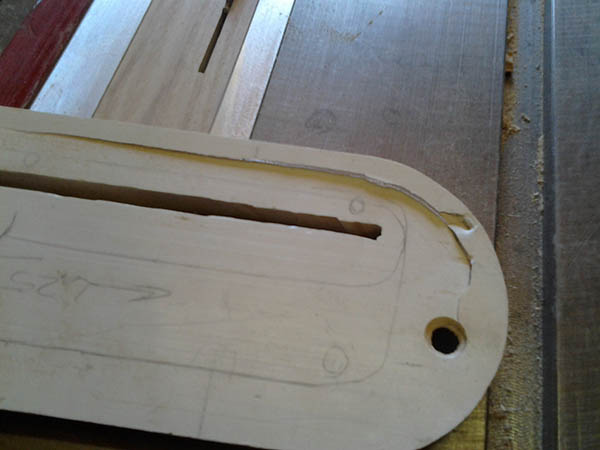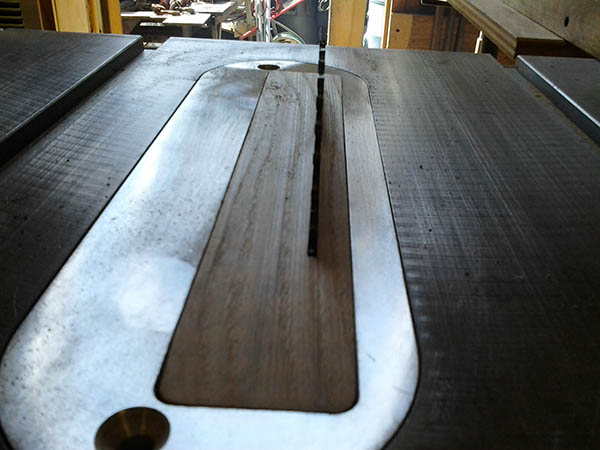In last issue’s eZine, Rob shared the story of his first “real” woodworking project: a bookcase he built for a woman he later married. In response, we heard from several of you who also shared memories of your first woodworking projects. – Editor
“Believe it or not, my first full woodworking project was a bookcase for a young girl who I eventually married. I built it out of oak and stained it dark. That was about 73 years ago, and we still have it.” – Phil Goldman
“When I was eight, I built a bookcase for myself. (My dad ensured I didn’t mangle myself.) It is made from Douglas fir and the shelves are dadoed in using chiseled dadoes. I still have and use it some 70 years later.” – Ron Orr
“Like you, I was inspired by a woman. My first project was a cedar-lined maple hope chest offered as a wedding proposal gift. The chest and the woman have been in my life now for 45 years. And she still appreciates my woodworking gifts.” – Ray Potter
“Big freeze in Louisville, Kentucky, toppled cherry tree in my backyard. Pulled branches, etc. into basement and bought a Craftsman band saw on sale for $200 with my wife’s Sears discount. Made a lot of stuff. $4,000 later, I actually have a woodshop. It has been wonderful. I love to work the wood.” – Phil Zoeller
“My first project was a water wheel for my Mom. The one my Dad built was old and rotting away, (he had passed away), so I built her one out of marine plywood. Using hand power tools and a radial arm saw, which came with my newly purchased house, it served her well until she sold her house. It was therapy for me after losing my Dad and it went surprisingly well.” – Al Micucci
Home improvement was a recurring theme. – Editor

“I guess my first ‘real’ woodworking project was an 18th century 18-room house. My first husband and I bought this nearly derelict monster when we had been married about two years, and I spent years working on its renovation. On that job, I learned to repair and sometimes duplicate moldings and raised panel walls, how to make miter joints, how to completely rebuild a double-hung window (we had about 70 of them), how to lay and finish a wood floor, and how to not throw hammers at the guy I was married to. Later, I took these skills and started making furniture and other stuff for my own use, such as this teardrop Appalachian dulcimer which needed strings, frets, and pegs when I took the photo, and this little cedar sailboat. I’ve rebuilt two other houses since then, and continue to make period reproduction furniture when I get the chance, although I am presently working on a house from scratch while I put together a farm in Alaska. With a different husband, though!” – Louise Heite

“My first ‘serious’ woodworking project was to replace a drawer in a built-in corner cabinet in the house my wife and I bought and still live in. The drawer was around 70 years old at the time and falling apart. Apparently even in the late 1920s, cabinetmaking could be ‘cheap.’ The ‘first aspect was that, in keeping with cabinet being in a corner, the drawer was five-sided. After that, things have mostly seemed easier.” – J.W. Dougherty
We heard of first projects inspired by a futuristic TV show and an old-fashioned writing instrument. – Editor
“When I was a kid, my best friend’s dad was a cabinetmaker and had a shop in his basement. We were allowed to use hand tools and one old power drill. My buddy and I made ray guns out of wood so we could play Star Trek (my buddy’s were awesome, mine pretty plain).
“My first real project: I built a pair of 2-½ cubic/foot speakers for my stereo in high school. I only had a circular saw, jigsaw, power drill and some basic hand tools. Rabbits and dadoes were too tough to do with what I had, so I used butt joints with cleats to reinforce them. I used lots of glue and a ton of screws and covered them with a generic wood grain laminate. They went through various modifications and were my main speakers through and after college (many parties) in the early 80s. The laminate has all peeled off and I’ve modified what’s left of the cabinets even more and still use them for test cabinets today for designs I’m trying out. They aren’t pretty anymore, but still serve a purpose all these decades later.” – Bill Koski
“My first woodworking project was a blotter holder. The blotter was an absorbent piece of thick paper intended to draw excess ink from writings by a fountain pen. I really learned how to use a plane during that project, especially when making the surface for the blotter curved. The project was completed in the fall of 1953 in Mr. Cappel’s woodshop class at PS 89 in Brooklyn, New York. Unfortunately, the blotter holder was almost as useless then as today. The ballpoint pen was becoming the preferred writing instrument.
“Interestingly. a bit over 50 years later, in a college level hand tools class I was using the plane in the ‘Half and Half’ method to square up the end grain of a project. The instructor saw me using the technique. He demanded, ‘Where did you learn to do that?’ I explained and his next comment was, ’Let me try.’” – Rich Flynn
People had different perspectives on the changes in their skills and approach to woodworking since that very first project. – Editor
“My first project came a year or so after Kathy and I got married some 40 years ago, and I still catch flak off of it to this day. It was what I described as a water hose holder. If I was to repeat what others called it, you would ban me from ever writing to you again. It was constructed out of 2″ X 4″‘s and one 4’ X 4″ right up the middle. I built cross members for the ground as stability and, for the top, it had the same thing going across the 4″ X 4″ for the hose. I added a piece of 2″ X 4″ on the ends to secure them from bowing. Yes sir, it was nothing to brag about, but it was mine and I did it. Since then, I have paid very close attention to all of my magazine subscriptions, the hardbacks I read on woodworking and all of the YouTube videos I see to learn any new tricks. Since that day, some 38 years ago, I have built a few things that are, let’s say, really nice. As a matter of fact, I don’t make people laugh anymore with my woodworking. I make pretty good money off of it! Now who’s laughing?” – Dennis Young
“My first was a coffee table and a pair of matching end tables. The coffee table doubled as a large cribbage board. When I was a young boy, around seven or eight, my godfather took hold of my forearms and stared at my hands for a bit and decreed, ‘You’ll swing a hammer and be a carpenter.’ When I reached adolescence, I watched my stepfather build all kinds of things for our home: china cabinet, dressers, headboards, kitchen cabinets, etc. He was the ultimate scrounger; the kitchen cabinets that my mom treasured until she sold her home last year were made from cedar cross-arms salvaged from abandoned phone lines.
“It was from his salvage that I got the inspiration to make the table set. I had seen him make many of these cribbage tables over the years. He would salvage a solid core mahogany door and cut it into an ellipse shape, screw on some threaded table legs and ta-da, a coffee table.
“I was around 20 — just bought our first home and was doing some very basic home improvements. One day while shopping for parts and pieces, it popped out in front of me – like golden rays of light, through dark storm clouds. A 36-inch wide Philippine mahogany door slab with a small piece of damage on one of the corners. Too ugly to be a door, but sweet enough to make a matching set of end tables and cribbage board-coffee table. Up to this point I had no training, no instruction, just prophecy and observation.
“Although I had no practical experience, I did have my own personal philosophy on joinery. I, to this day, believe my best projects are devoid of nails and screws. In today’s busy lifestyles, the luxury of such joinery is not always practical. However, I decided as this was my first ever anything project it would be a no nails or screws project. The whole process would be doweled together, no screws, no nails. This would be my ultimate accomplishment, my crowning glory. I was 20 – how brilliant was I?
“I wrapped a piece of masking tape around my drill bit a few times to act as a depth-gauge. Before I drilled each hole into the legs, aprons and tabletop, my wife would stand at the side. She would instruct me to tilt more forward or backward. I would control left and right axis; once the ‘go’ word was given, plunge and do again and again for a total of 80 holes.
“As you can well imagine, it didn’t match up. There was always a slight deviation of axis from dowel to dowel. Holes didn’t seem to quite match up with some of the dowels. At first it seemed like such a mess, what was I thinking… But here’s the thing: it’s really kind of a fluid assembly. A pound here or there with a hammer, a push and pop and, all of a sudden, things sort of just squeeze into place. I wasn’t perfect, but it was close. I had created one crack on one of the dowel holes on a lower apron. One crack. All in all, they went together pretty good.
“When I talk of building those tables, I often used the term, ‘I was too stupid to know better.’ I still believe that to this day. My shop is now full of some of the finest machinery money can buy. My joints are tighter than ever, but of all the pieces I ever made, they were my finest. I’m 60 now and those tables are long gone. I wish I had them back. I would have fixed up the minor edge issue and let the rest stand as testimony for the courage to build without having it be all perfect to start. If you have an idea, do it – there will always be plenty of people to tell you why it’s not right or it could be done better. I have made the greatest strides in my life, when I was too stupid to know better. It’s about taking the smallest amount of information and ability and moving forward to complete the project.” – Desie Kushniryk
Zero-Clearance Throat Plates
We also heard from a reader who had more to say, and pictures to share, regarding the zero-clearance throat plate presented in last issue’s eZine. – Editor
“I watched the recent video about making a zero-clearance insert and made a reply in the discussion section. I wanted to post a photo of what I discussed but was not able to do so.
“I have attached photos of the original insert; one of the many zero-clearance inserts I’ve made (similar to the one in the video); and one of the inserts I have been using for over three years now, through many, many standard blade changes, multiple dado cuts, and even blade angle cuts. Initially, it was a bit more costly to make, but it has saved me time and money in the long run. How many zero-clearance inserts work on multiple cuts and stand up to excessive use? Mine does!
“Insert 002 is the original insert for the saw. Insert 004 is a broken insert that survived without crashing into the saw and flying into hundreds of pieces. Insert 007 is my improved insert that has a much stronger flange and can stand multiple blade size changes including dadoes and angled cuts.” – Michael Madden








